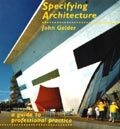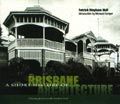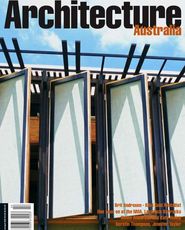Review
SPECIFYING ARCHITECTURE: A GUIDE TO PROFESSIONAL PRACTICE

John Gelder. CIS Publications, $59.50
Architects tend to have limited respect for specifications – they prefer the drawings as the communicative document. As a result specifications are done late in the documentation process, more at the behest of the building surveyor or to be used by the tenderers than as a critical component of the overall process. Often the specification is handed-out to an external consultant or a staff member (who has not been part of the design or documentation teams), who must complete the task to an arduous program and an unrealistic budget. Meanwhile, documentation has continued apace, burdened with wildly varying specification notes on the drawings, which illustrate the peculiar preferences of their authors more than an orderly and consistent approach.
John Gelder’s book is a concerted argument for the elevation of specifications to at least an equal partner among the contract documents. It should be remembered that most building contracts state that, where there is conflict, the conditions of contract will override the specification, which will in turn override the drawings. Thus the specification has the prime role in defining the building works.
Specifying Architecture is not a conventional specification text. Perusal of the contents page is a great relief. Instead of the long list of work sections or trades, eight chapter headings illustrate the breadth of the analysis – “Historical context”, “Contemporary context” (Australia, the UK and America), “Programming and specification design”, “Contractual issues”, “Technical issues”, and “Using the specification”. The coverage is complete, the story of interest, and the intellectual coherence formidable.
This is a mandatory text for all architects’ libraries. Once there it should not be allowed to collect dust. The project team and the specification writer, in or out of house, should use it as a quality assurance document and be able to show evidence of how they have utilised it in the pre-design, design and documentation phases of the project.
Tony Mussen
A SHORT HISTORY OF BRISBANE ARCHITECTURE

Edited by Patrick Bingham-Hall. Pesaro Publishing, $35.
This pocket-sized, hardback volume provides a quick and inviting taste of Brisbane’s architectural history – as constructed through a collection of 100 extant buildings dating from 1828 to 2001.
Following a brief overview by Michael Keniger, each building is represented, on one page, by one of Bingham-Hall’s photographs and a short descriptive paragraph. A hybrid guidebook/miniature history, the book whets one’s architectural and historical appetites by demonstrating the diversity of interesting work to be found in Brisbane, by encouraging the reader to seek the buildings out when next in that city, and by hinting at possibilities for the further critical and historical investigation.
Justine Clark















